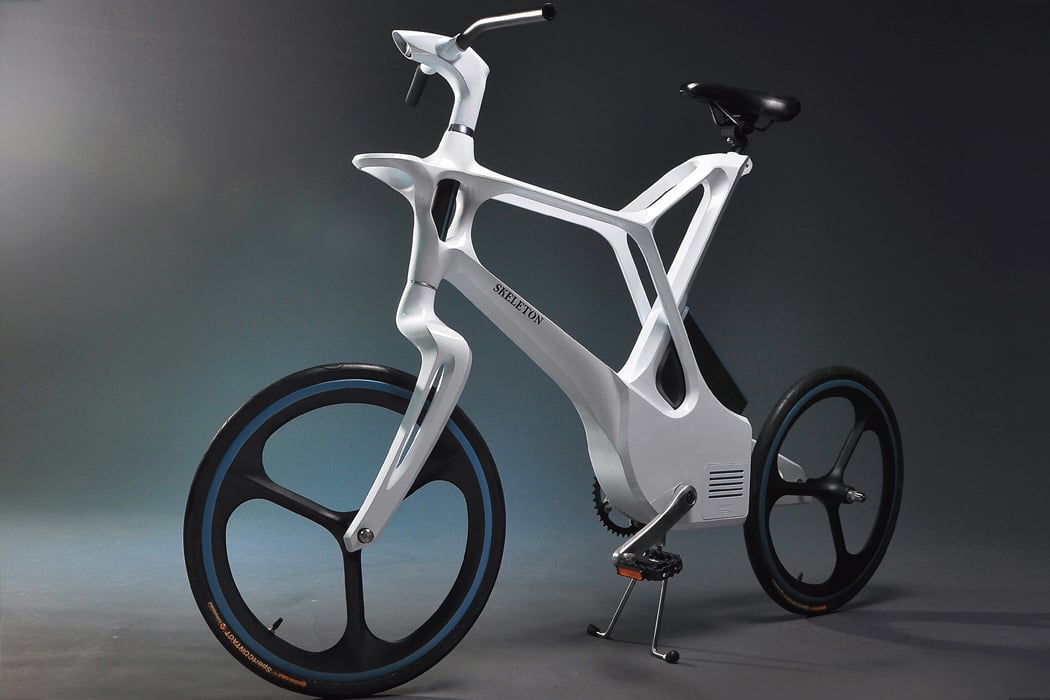
Industrial designer Gary Liao from Taipei, Taiwan sees bikes not just as a means to get from one place to the other, but as a true work of art. He is also intrigued by the intricacies of the human anatomy – the skeletal structure in particular which justifies this automotive concept. Called the Skeleton, it is a cool-looking, medium-sized electric bike for urban commuting needs. The idea is to have an upright driving position like a Dutch styled-bike for short commutes in the city. Obviously, the size of the electrically assisted bike and how easy it is to maneuver in tight spaces also matters – hence, the Skeleton bike is designed to mimic the human bone structure. The hollow bone pillar is lightweight yet equals the strength of a solid pillar made from concrete and steel. Hence, this electric-assisted bike also adopts that quality.
Depending on the needs of the user, the bike can switch between different speed-assist modes via the mid-mounted motor that delivers power to the back wheel. The battery fits inside the rear of the bike frame like a diskette and can be removed for charging during the nighttime. The bike has a lighter belt drive system instead of a chain drive system to eliminate any unnecessary hassles. For optimum acceleration, easy turning, and stop-and-go power, uses a carbon fiber 20-inch wheel. Skeleton connects wirelessly to your mobile devices to get all the necessary information about the battery condition and displays other vital telemetry.
The design of the frame is such that you can put a file, briefcase, or any flat solid object without disrupting the center of gravity or your pedaling motion. There’s a slot to put bottles or coffee cups too which indicates the bike’s target audience – the corporate crowd who are always on the move with their cup of Joe. This concept bike is not just any other run-off-the-mill blueprint for the future of mobility, it delves deep into the very connection with the man-machine ideology. Of course, it has the cool looks to impress too. Bike manufacturers need to look at this design closer because it could see the light of day in the coming years!
Designer: Gary Liao
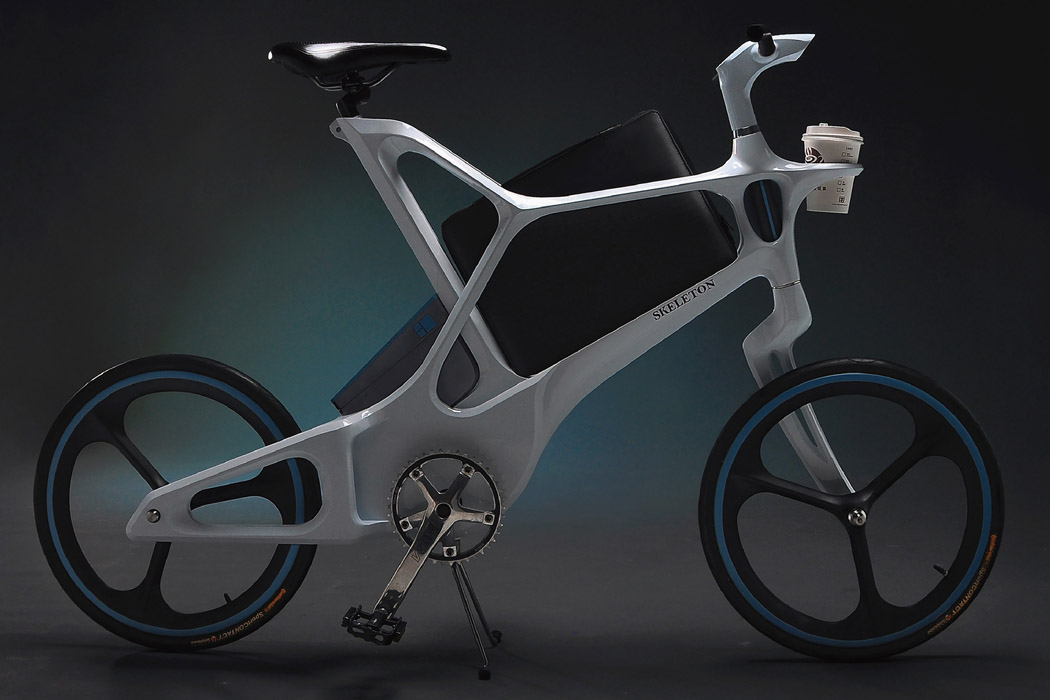
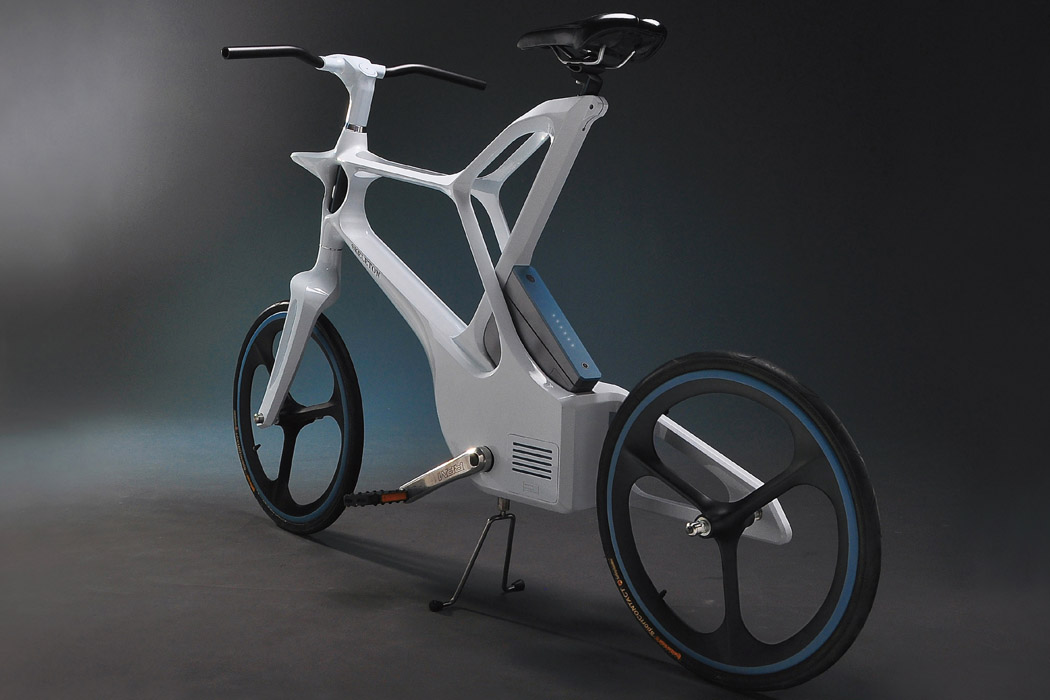
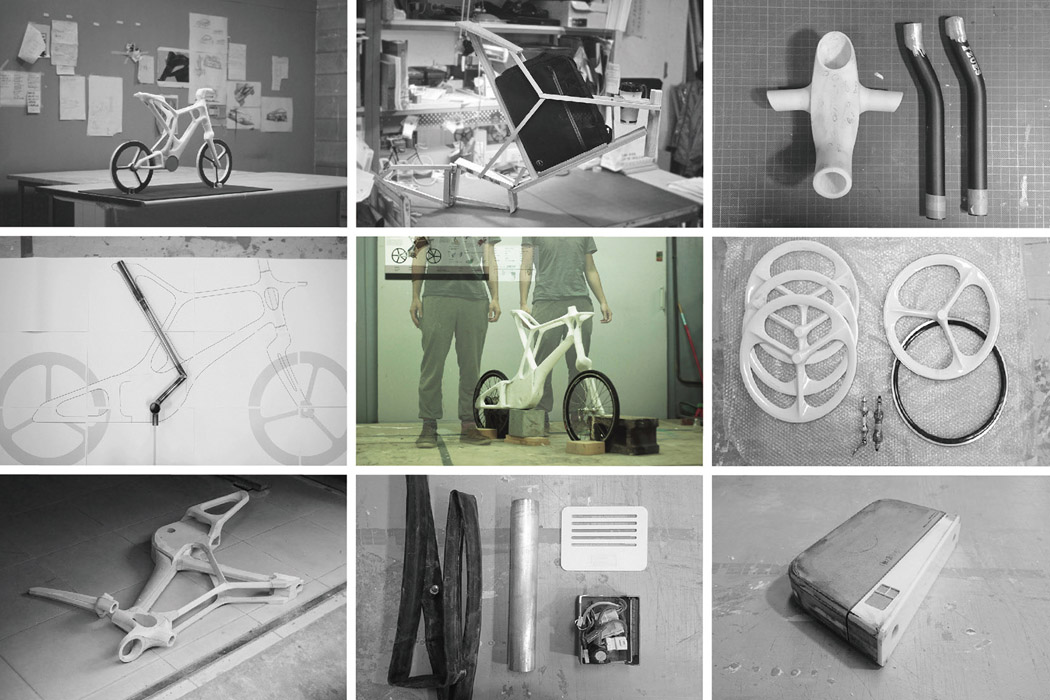
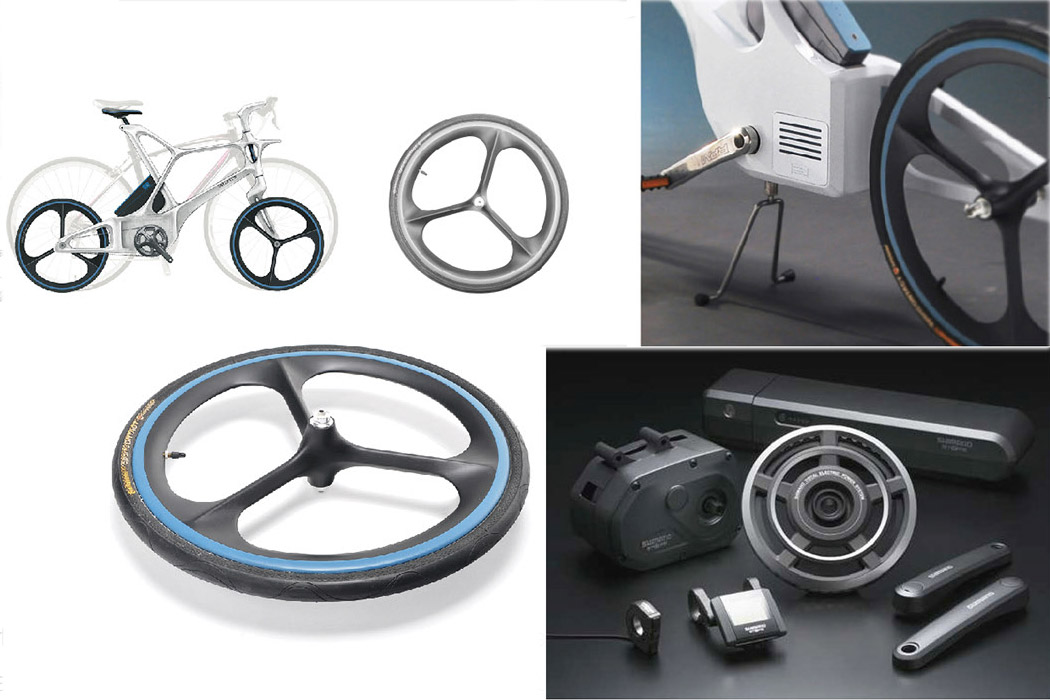
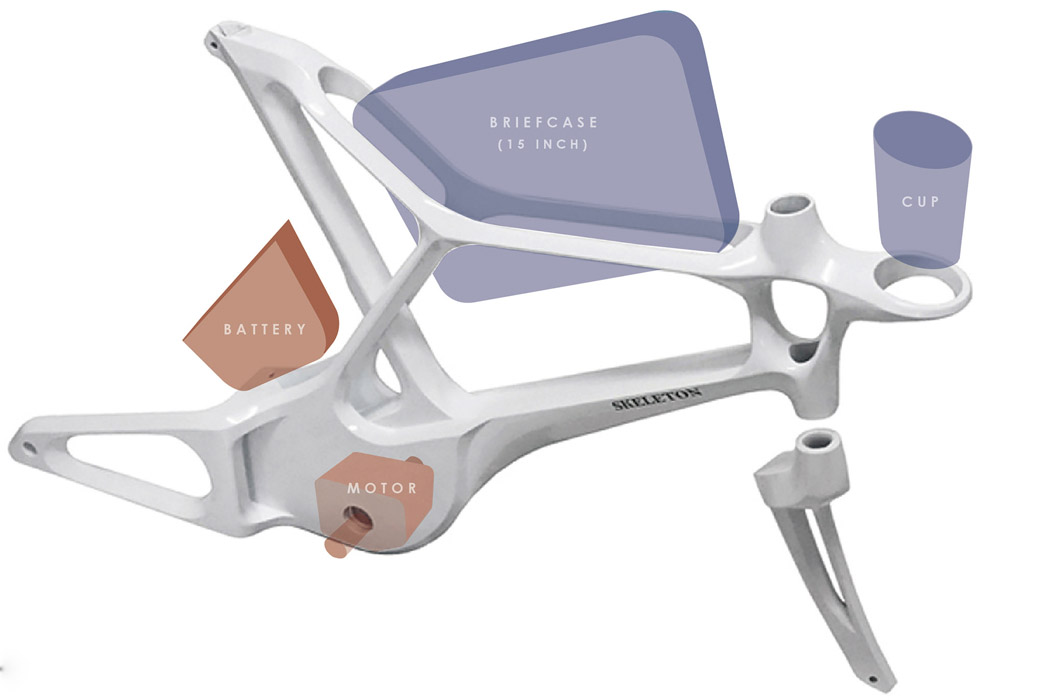
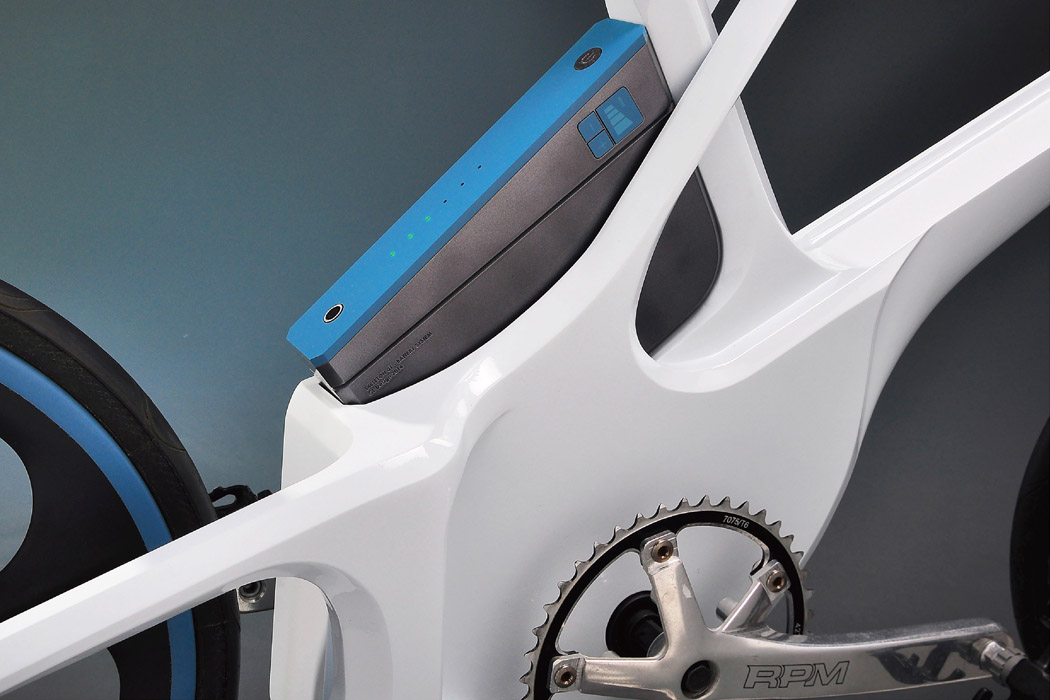
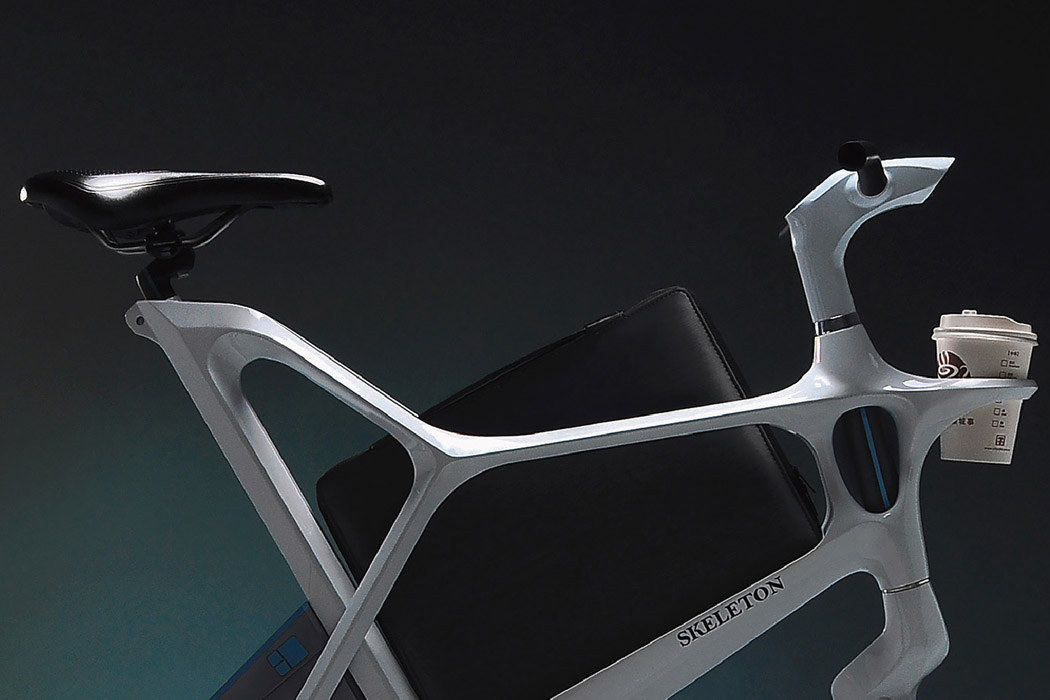






















 LCD Eyes
LCD Eyes 












